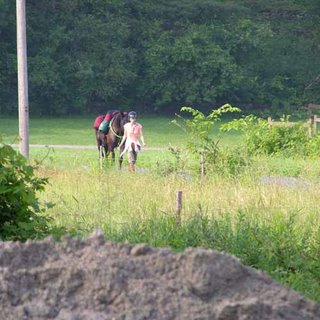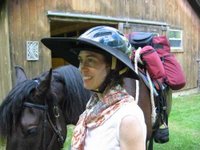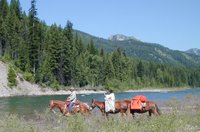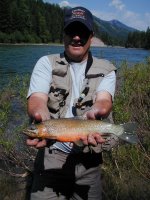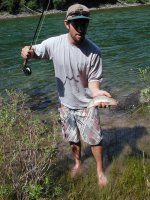Montana Canvas Wall Tent Material Comparison
Montana Canvas Wall Tents are available in two materials: 100% Canvas and 100% Relite. Both materials are pretreated to be flame retardant, water resistant and mildew resistant and meet the California Fire Marshall specifications. Montana Canvas also offers a Montana Blend wall tent where the roof is made of canvas and the side walls of Relite.
Canvas. Canvas is the traditional material for wall tents. The canvas used by Montana Canvas is available in 10 oz and 12 oz weights (10 oz is the most popular). Because it is 100% cotton, canvas is especially good at absorbing some of the interior condensation created by drying clothes or boiling water, while also retaining heat well. The weight of canvas helps it billow less in a stiff wind. A canvas wall tent provides excellent shelter, but needs to be taken care of properly. We recommend completely drying your canvas wall tent after each use to avoid mold and mildew growth.
Relite. Relite is available exclusively from Montana Canvas. For many outdoor camping purposes, Relite is the perfect tent fabric choice. This unique polyester-based fabric is extremely lightweight, which makes it ideal for packing in on animals and environmentally friendly, low-impact camping. Soft, pliable and easy to clean, Relite offers a tear strength and longevity as good as canvas. Because Relite is so highly durable and more resistant to destructive ultraviolet rays than other commonly used materials such as nylon, it is the choice of many outdoor enthusiasts. Relite does not grow mold or mildew. However, we do recommend that you dry your wall tent out before storage. This takes only a few minutes with Relite and keeps it from smelling musty when you use the next time. Relite does not need to be retreated for water resistancy, but we advise you to reseal the seams as needed. All-Dri is provided with your Montana Canvas Relite tent or can be purchased from us.
Montana Blend. Montana Blend offers you the best of both worlds. With the majority of the tent made of lightweight Relite, the overall weight of your wall tent is substantially reduced from that of a canvas wall tent. The canvas roof provides you with a more breathable material overhead to absorb the condensation from breathing, cooking and drying clothes. Although we recommend setting up your tent to dry it out before putting it away, with a Montana Blend tent, the tent could be set up such that the roof was exposed to dry. The canvas roof gives your wall tent a more traditional look than a 100% Relite wall tent.
When choosing Relite fabric for your wall tent, we highly recommend the tan. It allows plenty of light to penetrate the tent without being too bright inside or out. It blends well in most environments and does not show the dirt as much as the white or spring green.
I have used a Montana Canvas Wall Tent made of Relite for 15 years. I chose Relite because I pack into the backcountry to go camping and hunting and like to keep the weight of my equipment down. I have used this tent in all types of conditions from early spring to late fall and have never had an issue. I heat my tent with wood and use a fly, which I strongly recommend to all tent users regardless of the material they choose. After 15 years of hard use, I have no reason to believe that a wall tent made from Relite will not last as long as any canvas wall tent.
